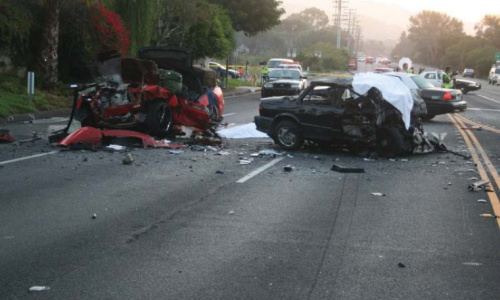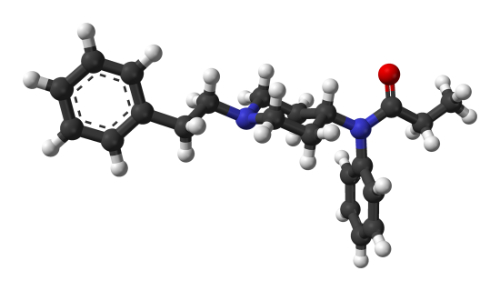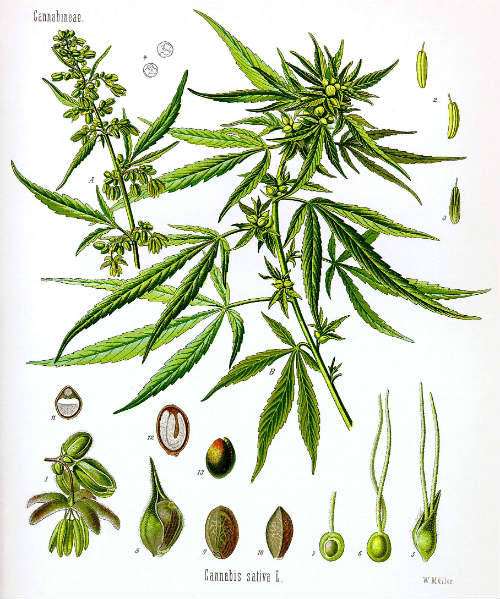- Deaths due to traffic collisions rose in 2015 by 7.7%—the largest increase in 1966.
- Opioid-related overdose deaths are at epidemic levels.
- Cannabis use is legal in 25 states.
- The cost of these collisions and deaths is estimated at nearly $38 billion.
Are these phenomena related?
Automobiles are safer today than at any time in the history of driving. Despite this, the rate and number of traffic collision-related deaths increased sharply in 2015—by about 7.2%. More than 35,000 people died in traffic collisions according to a press release issued by the National Highway Traffic Safety Administration (NHTSA). This represents the largest single-year increase since 1966. Pedestrian and cyclist fatalities increased to a level not seen in 20 years. Motorcyclist deaths increased by more than 8%. “The National Safety Council has said that its preliminary estimates for the first 6 months of 2016 show the trend increasing, with fatalities up 9%,” according to a report by CBS.com.
The cost of these collisions and deaths is estimated at nearly $38 billion, according to the Texas Department of Transportation.

(Source: Los Angeles County Sheriff’s Department.)
“Despite decades of safety improvements, far too many people are killed on our nation’s roads every year,” said U.S. Transportation Secretary Anthony Foxx. “Solving this problem will take teamwork, so we're issuing a call to action and asking researchers, safety experts, data scientists, and the public to analyze the fatality data and help find ways to prevent these tragedies.”
The NHTSA attributes the increase to a number of factors:
- Job growth and low fuel prices were 2 factors that led to increased driving, including increased leisure driving and driving by young people. More driving can contribute to higher fatality rates. In 2015, vehicle miles traveled (VMT) increased 3.5% over 2014, the largest increase in nearly 25 years.
- Almost half of passenger vehicle occupants killed were not wearing seat belts.
- One in 3 fatalities involved drunk drivers or speeding.
- One in 10 fatalities involved distraction.
- The data tell us that people die when they drive drunk, distracted, or drowsy, or if they are speeding or unbuckled,” said NHTSA Administrator, Mark Rosekind, PhD. “While there have been enormous improvements in many of these areas, we need to find new solutions to end traffic fatalities.”
Is This the Whole Story?
While the NHTSA attributes the traffic deaths to drunk, drowsy, and distracted driving, there may well be other causes that don’t show up in the statistics. Perhaps harder to detect following traffic collisions are opioid intoxication, cannabis intoxication, and multidrug intoxication that can also include sedatives such as benzodiazepines which synergize with opioids.
After alcohol, marijuana is the drug most commonly found in the blood of drivers involved in crashes, according to data published by the National Institute on Drug Abuse.
According to the 2014 National Survey on Drug Use and Health (NSDUH), 10 million people aged 12 or older reported driving under the influence of illicit drugs during the year prior to being surveyed, according to the Center for Behavioral Health Statistics and Quality (CBHSQ).
One NHTSA study found that in 2009, 18% of drivers killed in a crash tested positive for ≥1 drug. A 2010 study showed that 11% of deadly crashes involved a drugged driver. It's hard to measure how many crashes are caused by drugged driving, according to the National Institute on Drug Abuse (National Institutes of Health, NIDA) This is because:
- A good roadside test for plasma levels of opioids and THC do not yet exist;
- Police don't usually test for drugs if drivers have reached an illegal blood alcohol level because there's already enough evidence for a DUI charge;
- Many drivers who cause crashes are found to have both drugs and alcohol or more than one drug in their system, making it hard to know which substance had the greater effect.
People Taking Carfentanil, For Recreational Purposes
According to an article in The New York Times, carfentanil, a fentanyl derivative used as an elephant tranquilizer, is being sold to heroin users in the Midwest.
The Times notes that officials across the country are already encountering many heroin-related overdoses and deaths this year. This is part due to an epidemic of heroin mixed with fentanyl (100 x morphine) that is available on the streets to people looking for heroin. Obviously, they have no idea how to dose themselves in fentanyl is mixed with their heroin.

(Sources: Wikipedia/By Ben Mills – Own work/Public Domain.)
Ohio
Worse, however, is the fact that officials are now seeing heroin mixed with carfentanil, which is still more potent yet than fentanyl. For example, officials in the Cincinnati, Ohio, area and in southern Indiana say that carfentanil (10,000 x morphine) could be involved in more than 189 overdoses and at least 4 deaths in Ohio and Indiana in recent weeks.
According to The Times, in the Cincinnati area alone, there were more than 78 overdoses reported in a 2-day period in August. During the same period there were at least 15 overdoses, one of them fatal in 2 neighboring counties in Indiana.
Officials have noticed that more people who overdose are requiring still larger doses of naloxone in order to be revived. One overdose subject required 4 doses of naloxone to be revived.
Melvin Patterson, a Drug Enforcement Administration spokesman in Washington, DC, told The Cincinnati Enquirer that in the past, carfentanil had been traced to Chinese manufacturers who ship the drug through Mexico and into the United States.
One man was arrested and accused of selling pure carfentanil, The Associated Press reported. He has been charged with murder.
Wisconsin
Twenty people have of probable heroin overdoses in Milwaukee County in a 2-week period in August. The county, home to nearly 1 million residents typically averages 1 heroin death every 3 days, the office said Thursday. The medical examiner is investigating the possibility that other drugs, such as fentanyl, played a role in the deaths.
Nationwide
Nationally, use of heroin has risen dramatically in the past zdecade, according to the federal Centers for Disease Control and Prevention. Heroin deaths have tripled since 2010, the Drug Enforcement Administration notes.
Among young adults ages 18 to 25, heroin use more than doubled. Across the U.S. In 2014, 10,574 people died from heroin overdoses. Deaths from the drug increased 6-fold from 2001 to 2014 and increased 26% from just 2013 to 2014.
Overdose deaths related to synthetic opioids, including fentanyl, increased by 80% between 2013 and 2014, according to the CDC. The center put deaths related to synthetic opioids other than methadone at roughly 5,500 nationally in 2014.
- In Cuyahoga County, Ohio, where Cleveland is the largest city, had 47 heroin overdose deaths in July and 15 the first week in August, according to The Cleveland Plain Dealer. That county, home to more than 1.2 million people, has had more than 200 deaths so far this year.
- In all of New Hampshire, where 1.3 million people live, more than 113 people as if July 8 have died from overdoses from fentanyl, heroin, or a combination of the 2, WEVO-FM, Concord, reported.
- In Horry County, S.C., where Myrtle Beach is the signature city, 4 or 5 heroin deaths a week are translating to more than 20 a month, WBTW-TV, Myrtle Beach-Florence, reported. Since January, emergency crews have responded to more than 500 overdose calls in a county of about 300,000 residents.
- In Jefferson County, Ala., where Birmingham is located, 67 people died from either heroin, fentanyl, or a combination of the 2 in the first 6 months of 2016, The Birmingham News reported. The county has a population of 660,000.
- On Staten Island, 1 of New York City's 5 boroughs, 56 heroin overdose deaths had been reported this year through mid-July, according to the Staten Island Advance. Naloxone, administration saved 20 lives. The borough has about 475,000 residents.
- Onondaga County, N.Y., where Syracuse is the county seat, had 29 heroin deaths in the first 6 months of the year and is on track to surpass last year's deaths by more than a third, The Syracuse Post-Standard reported. The county has about 470,000 residents.
- In Lafayette Parish, La., law-enforcement officials are concerned about an explosion of fentanyl deaths, 13 so far this year in the parish of about 250,000 people. The number for all of 2015 was 3.
Cannabis Epidemic Causes Still More Traffic Deaths
A study published in 2009 in the American Journal of Addiction showed that cannabis may acutely impair several driving-related skills in a dose-related fashion, but that the effects between individuals vary more than they do with alcohol because of tolerance, differences in smoking technique, and different absorptions of THC.

(Sources: Wikipedia/by Koehler/Public Domain.)
“Driving and simulator studies show that detrimental effects vary in a dose-related fashion, and are more pronounced with highly automatic driving functions, but more complex tasks that require conscious control are less affected, which is the opposite pattern from that seen with alcohol.
“Because of both this and an increased awareness that they are impaired, marijuana smokers tend to compensate effectively for their impairment by utilizing a variety of behavioral strategies such as driving more slowly, passing less, and leaving more space between themselves and cars in front of them.
“Combining marijuana with alcohol eliminates the ability to use such strategies effectively, however, and results in impairment even at doses that would be insignificant were they of either drug alone,” the authors concluded.
“Comparisons between the public health risks of driving while intoxicated with marijuana and the driving risks associated with sleep deprivation, old age, distractions, and prescription medications should also be examined in order to guide more prudently the allocation of scarce public health resources,” they added.
Patients who smoke marijuana should be counseled to have a designated driver if possible. They should wait at least 3 hours after smoking before driving. Marijuana is particularly likely to impair monotonous or prolonged driving, and that mixing marijuana with alcohol will produce much more impairment than either drug used alone.
According to an article in The Lancet Psychiatry, about 10 million more Americans smoke marijuana now than 12 years ago.
The study comes as at least 5 states ready to vote on whether to legalize marijuana for recreational purposes, including California, which is considered a linchpin in the campaign for federal legalization.
“We certainly expected, based on other research, to find an increase” in marijuana use, said Wilson M Compton, MD, MPE, an author of The Lancet study and researcher at the National Institute on Drug Abuse. “It’s well known in the US that the laws related to marijuana have been changing; we’ve seen a number of states passing laws to allow marijuana for medical purposes.”
The study used data from 596,500 adults surveyed between 2002 and 2014 for the US National Survey on Drug Use and Health to reach its conclusions about how many Americans use marijuana.
One of the study’s key findings is that between 2002 and 2014, the percentage of Americans who said they smoked marijuana at least once in the previous year grew from 10.4% to 13.3%.
The 2.9% increase equates to an additional 10 million Americans who said they used the drug at least once in the past year, bringing the population who admitted use from 21.9 million in 2002 to 31.9 million in 2014.
One of the most surprising findings, Compton said, “is how many people there are using marijuana in a daily or near daily basis”.
That number more than doubled, from 3.9 million to 8.4 million, or 1.9% of the US population to 3.5%, over the same period. The proportion of adults who first tried marijuana also increased, from 0.7% to 1.1%, according to a report in the U.K.’s The Guardian.
“Our findings showed a sharp increase,” said Deborah Hasin, PhD, Professor of Epidemiology in Psychiatry at Columbia University in New York City. Dr. Hasin was the lead author of the National Epidemiological Survey on Alcohol and Related Conditions, which found the sharp increase in use disorders. “That’s consistent with a sharp increase of people going to emergency rooms with marijuana use, marijuana-related driving and fatal car crashes, and in Veterans Administration medical records,” Dr. Hasin told The Guardian reported.
Increase in Fatal Accidents Involving Cannabis
According to an article published by CNN.com fatal accidents involving cannabis have increased significantly in Washington State since marijuana was legalized there. CNN.com acquired these statistics from a study conducted by the American Automobile Association (AAA) Foundation for Traffic Safety.
Fatal crashes involving drivers who recently used marijuana more than doubled in 2014. Marijuana was involved in 17% of fatal crashes in Washington in 2014, up from 8% in 2013, the year before recreational marijuana was allowed there.
“The significant increase in fatal crashes involving marijuana is alarming,” said AAA Foundation CEO Peter Kissinger, “Washington serves as an eye-opening case study for what other states may experience with road safety after legalizing the drug.”
“There is understandably a strong desire by both lawmakers and the public to create legal limits for marijuana impairment, in the same manner as we do with alcohol,” said Marshall Doney, CEO of the AAA. “In the case of marijuana, this approach is flawed and not supported by scientific research. It's simply not possible today to determine whether a driver is impaired based solely on the amount of the drug in their body.”
“Whether the use of marijuana is legal or not, all motorists should avoid driving while impaired,” according to a AAA press release. “Just because a drug is legal does not mean it is safe to use while operating a motor vehicle. Drivers who get behind the wheel while impaired put themselves and others on the road at risk.”
While it can be very difficult for safety officials to assess the level of THC intoxication in people involved in traffic collisions, in Colorado and Washington, anyone driving blood levels ≥5 nanograms/ML of THC can be prosecuted for driving under the influence. But Oregon and Alaska have no clearly defined legal limit, and instead rely on police officer observations of impaired driving.
It is not clear that there are objective THC blood levels that correlate with driving impairment. Tolerance, type of ingestion, chronicity of use, and other factors can mitigate the impairment of a given driver who has used marijuana before or during driving.
“There is no number that we can use to reliably predict impairment,” Jake Nelson, the Director of Traffic Safety Advocacy and Research at the AAA. “Alcohol and cannabis are very different drugs. They behave in the body in very different ways, and trying to use the system from alcohol is not the way to go.”
Instead, states should use a combination of field sobriety tests, blood tests and evidence from drug-recognition experts to identify drivers who are impaired by marijuana, Mr. Nelson said. One strategy would be to pass a law that says that if any marijuana is found in the body, the driver or the driver's lawyer would need to prove that marijuana was not the cause of the person's impaired driving, he said.
Overall Safety Issue
According to an article published in 2014 by USAToday.com, “As more states are poised to legalize medicinal marijuana, it's looking like dope is playing a larger role as a cause of fatal traffic accidents. Columbia University researchers performing a toxicology examination of nearly 24,000 driving fatalities concluded that marijuana contributed to 12% of traffic deaths in 2010, tripled from a decade earlier.
“NHTSA studies have found drugged driving to be particularly prevalent among younger motorists. One in 8 high school seniors responding to a 2010 survey admitted to driving after smoking marijuana. Nearly a quarter of drivers killed in drug-related car crashes were younger than 25. Likewise, nearly half of fatally injured drivers who tested positive for marijuana were younger than 25.”
Results of a study conducted by researchers at the Columbia University Mailman School of Public Health were reported by CBS Seattle. This study found that fatal automobile collisions have been found to have tripled in states that perform toxicology tests on drivers involved in fatal car accidents.
In those states, California, Hawaii, Illinois, New Hampshire, Rhode Island, and West Virginia, “One of 9 drivers involved in fatal crashes would test positive for marijuana,” according to Guohua Li, DrPH, MD, Finster Professor of Epidemiology and Anesthesiology and Director of the Center for Injury Epidemiology and Prevention at Columbia.
The researchers found that drugs played an increasing role in fatal traffic accidents. Drugged driving accounted for more than 28% of traffic deaths in 2010, a 16% increase over rates seen 1999.
The researchers also found that marijuana was the main drug involved in the increase. It contributed to 12 percent of fatal crashes, compared to only 4 percent in 1999.
“If a driver is under the influence of alcohol, their risk of a fatal crash is 13 times higher than the risk of the driver who is not under the influence of alcohol,” Li said. “But if the driver is under the influence of both alcohol and marijuana, their risk increased to 24 times that of a sober person.”
